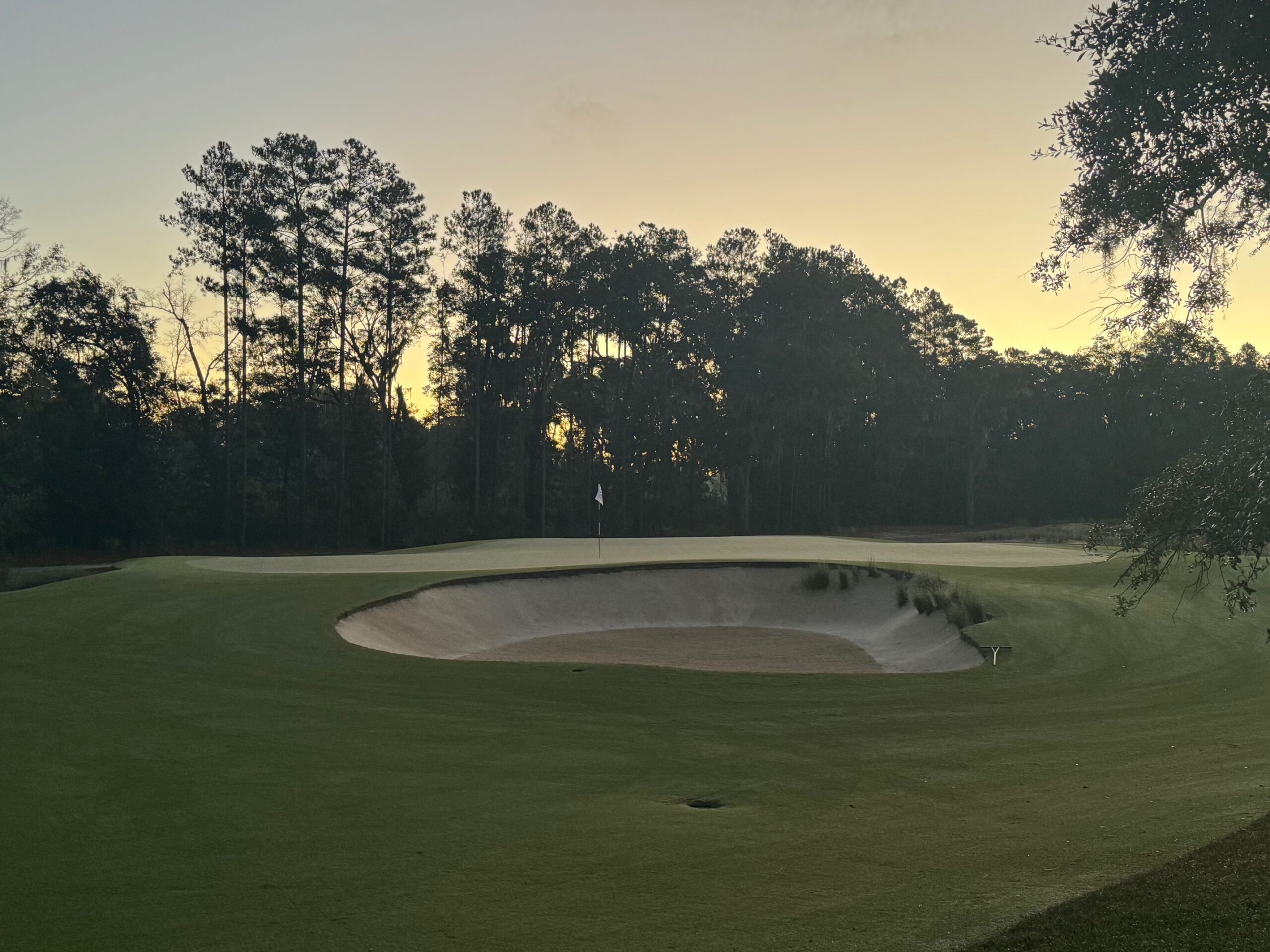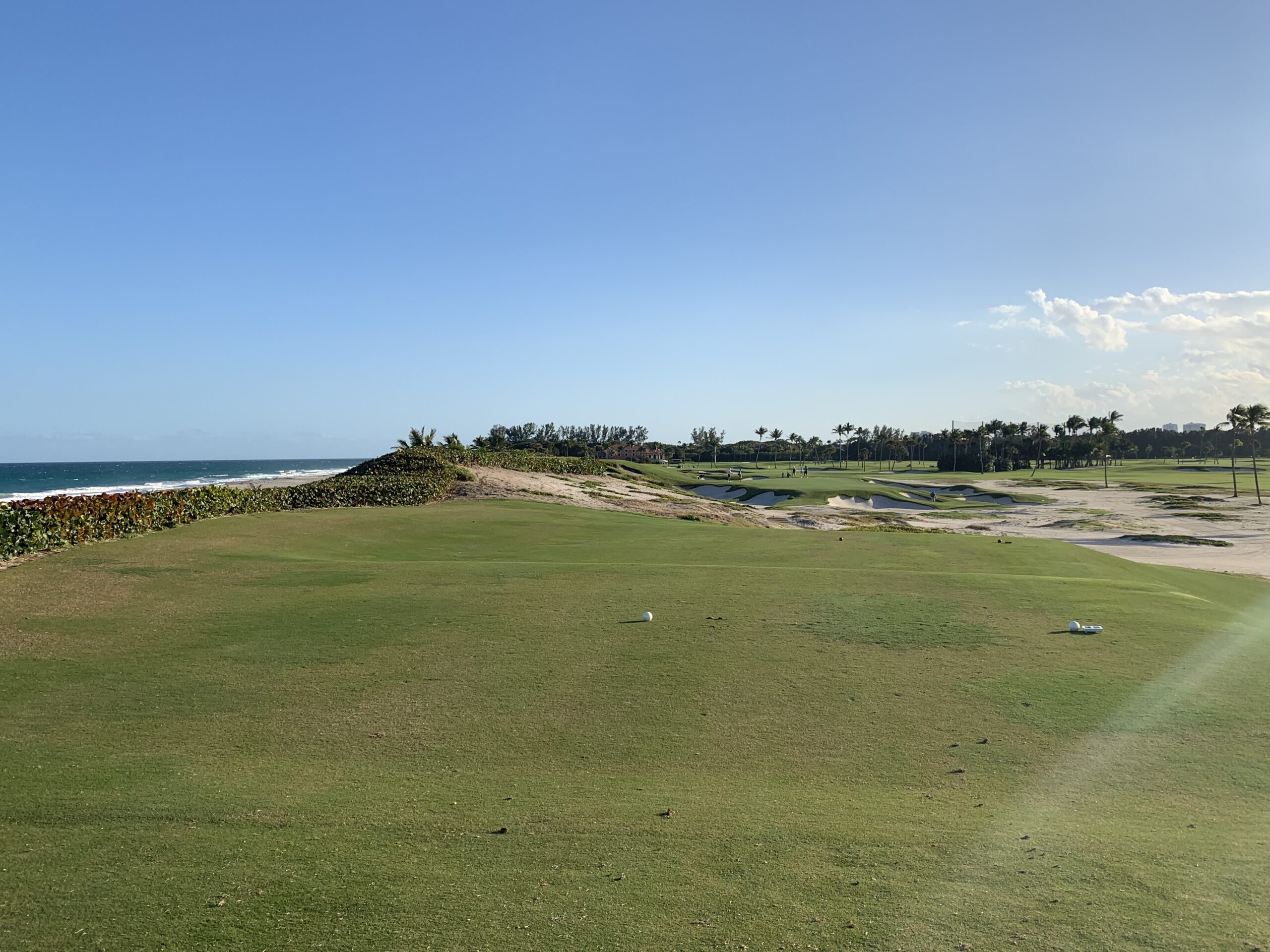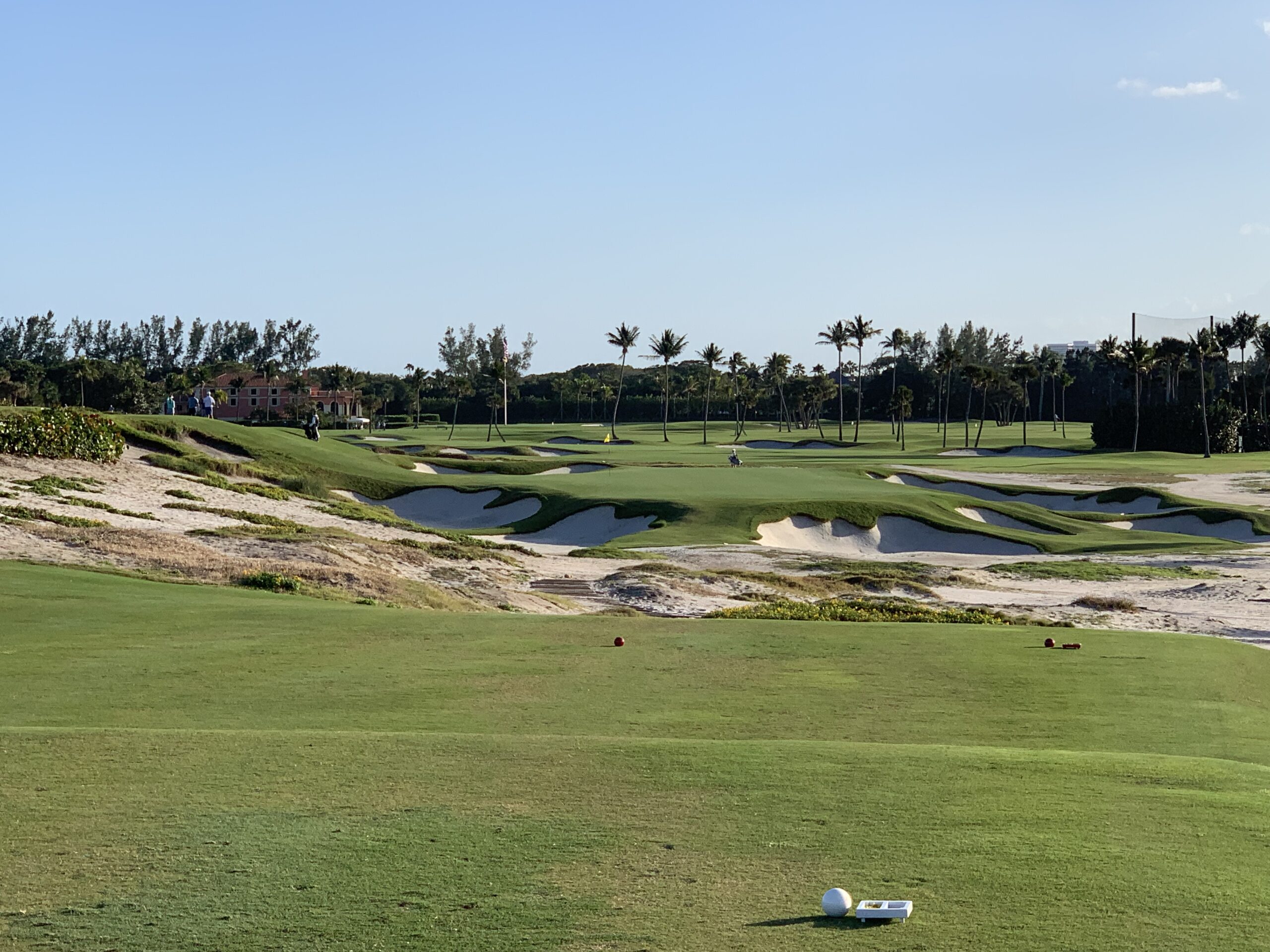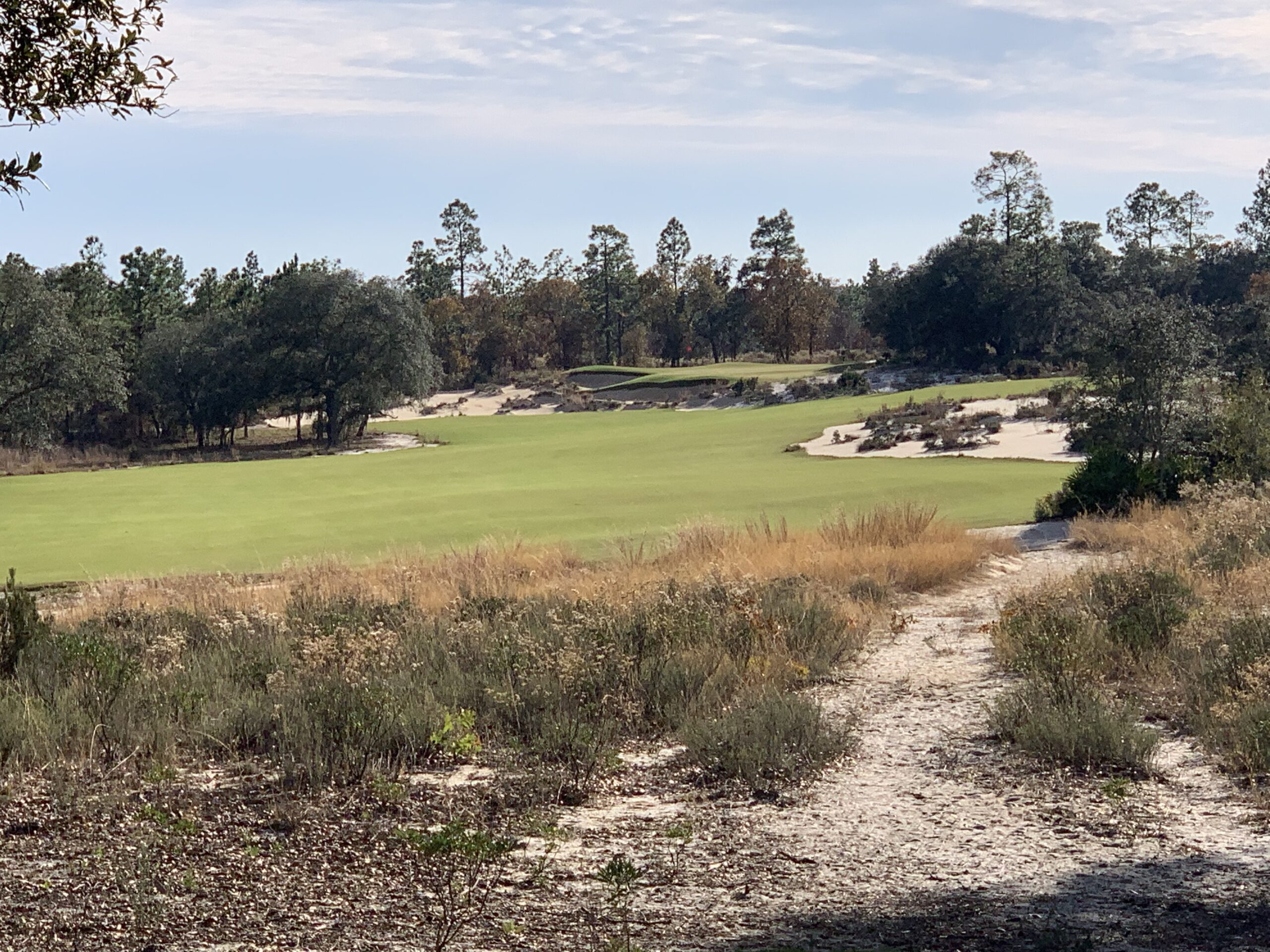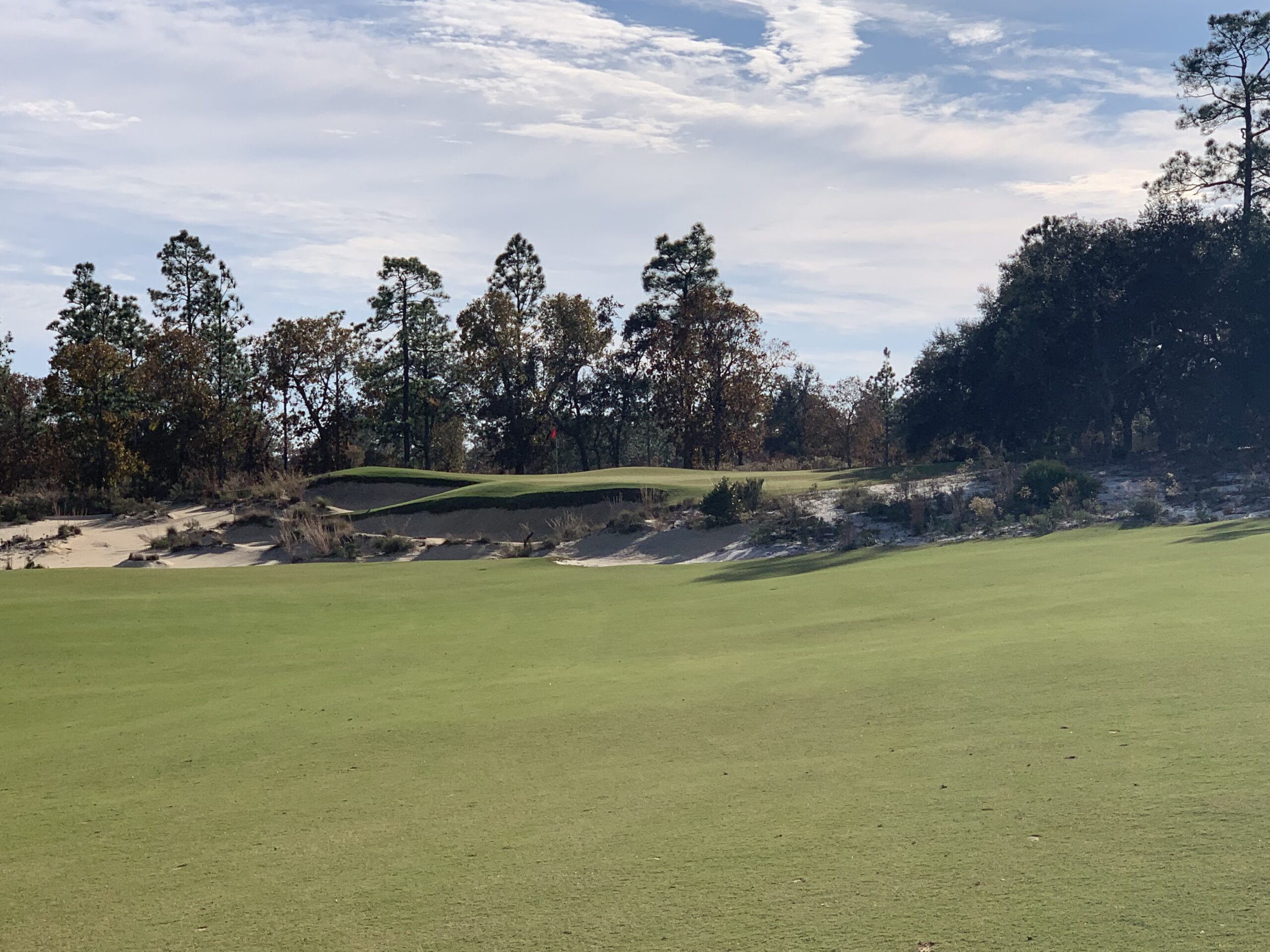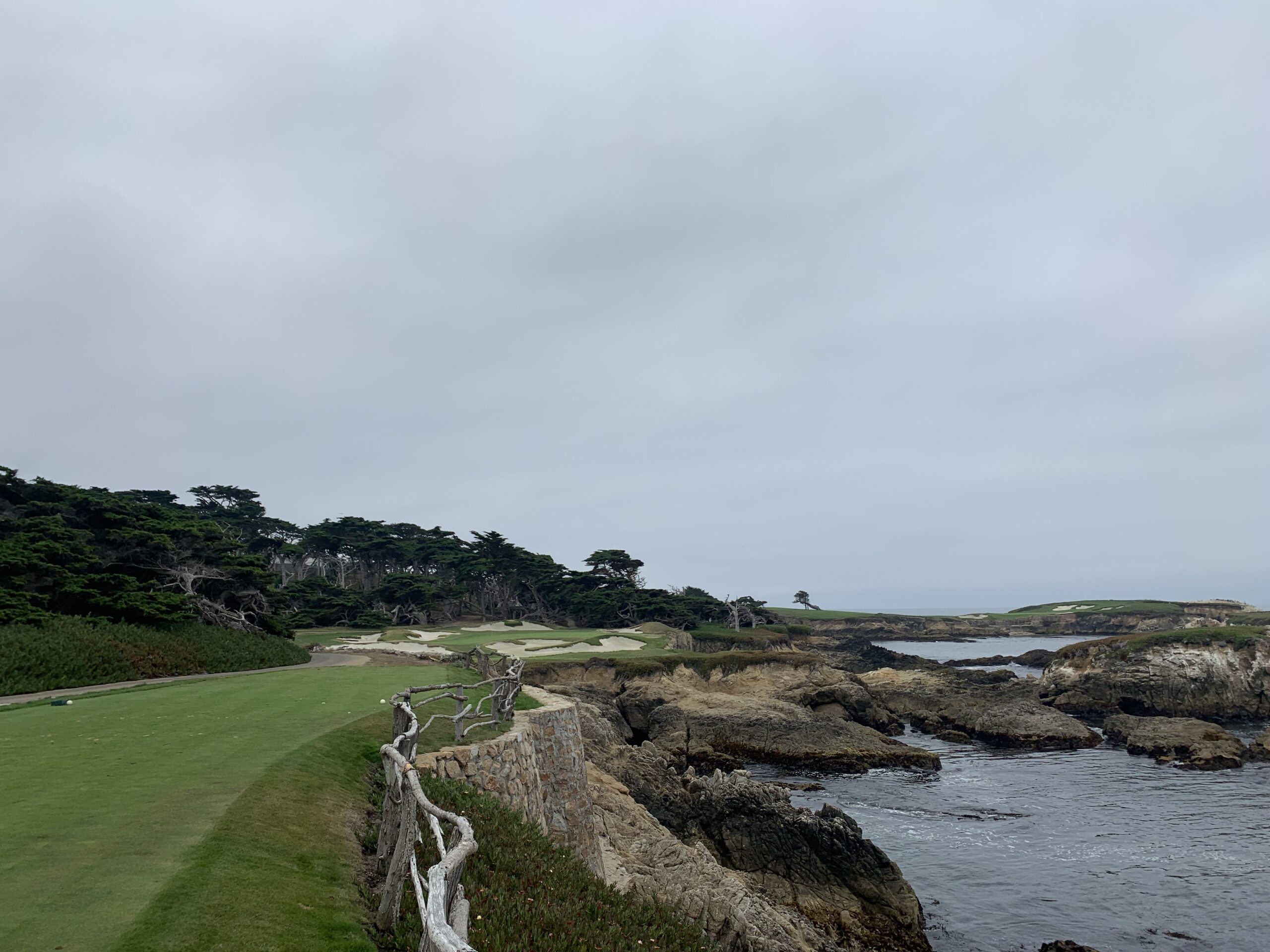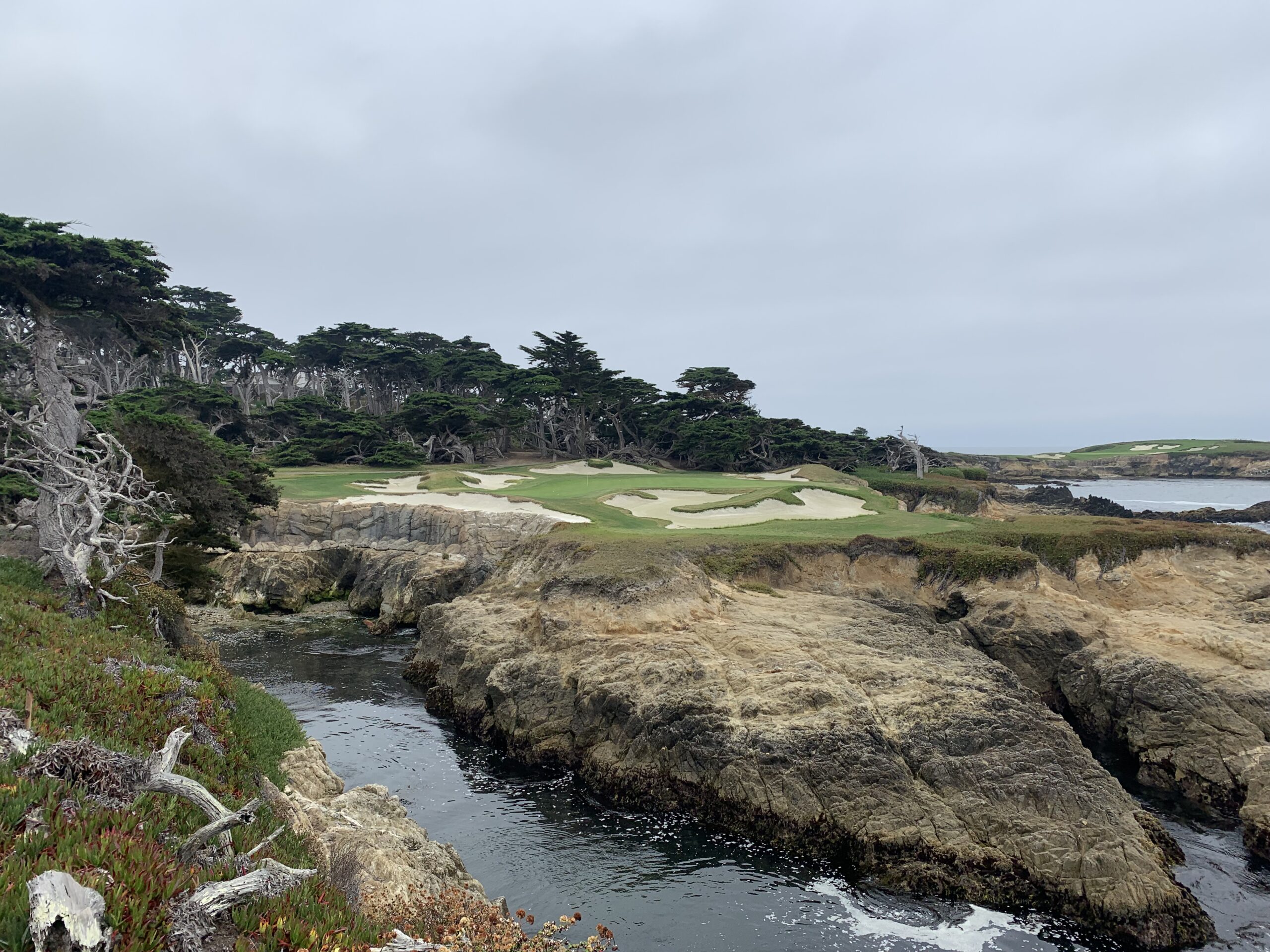
by Gary Williams | Mar 6, 2024 | Great Golf Holes
Par 4 – 415 yards
The punchbowl is one of the most famous design concepts made famous in the United States by C.B. Macdonald and Seth Raynor. I would argue there is no more famous or special punchbowl than the 16th at National Golf Links of America. It’s really hard to say what the crescendo is when you play National. I could walk off the fourth green and be totally content, not really, but the point is the golf course keeps hitting you with memorable moments. The climb up the 16th is majestic and mind-numbing. The signature windmill sits above the green and is one of the most powerful landmarks in the world of golf. The fairway has width, but your eyeline makes you want to cheat the hole up the left side and that is a fatal mistake. Right center of the fairway is the ideal line to play to the highest point and to also get the most reasonable view of the depressed green that sits below in the hollow. You have the target at the rear of the green to give you perspective on your line and you know that anything around the perimeter of the green will gather toward the middle. The green has more pronounced slope from the rear of the green to the front. The climb up the fairway is dramatic and severe for the further left you venture. Make a point to look back as you crest the fairway toward the redan green on the fourth hole because it is one of the finest viewpoints on another jaw-dropping hole.

by Gary Williams | Feb 29, 2024 | Great Golf Holes
Par 3 – 160 yards
When Gil Hanse and Jim Wagner designed CapRock Ranch the use of the Snake River Canyon was going to be the most prominent and spectacular feature of the experience. It is very challenging to identify definitively the best hole “in the canyon” but the 6th is the first of the blow your hair back visuals, not that you don’t “touch” the canyon on holes 4 and 5. You also close with 15 to 18 giving you the ultimate crescendo.
The 6th is the second par 3 on the outward 9, and the 3rd hole is special, in its own right. The designers toiled with the idea of fronting the green with a bunker but leaned on a little outside advice that reminded them of the look that fronts the 16th at Cypress Point. The 6th at CapRock is a modest length from the tips and the green has real depth. The green is pitched back toward the tee and there is ample “pinable” area in every quadrant. Naturally the hard right pin is the most dramatic on the canyon’s edge. The green sits atop the white rock of the canyon facade, 300 feet above the floor of the Snake River. CapRock Ranch launched itself inside the Top 50 of virtually all the Top 100 lists in the U.S. and we’re of the belief that there are not 20 better golf courses in America. It’s truly an amazing walk.

by Gary Williams | Feb 20, 2024 | Great Golf Holes
Par 5 – 595 yards
Congaree was constructed on sandy soil in the low country of South Carolina. Located northwest of Ridgeland, Tom Fazio envisioned a blending of the sand belt of Australia and the sand hills of North Carolina. The 2nd hole is a glorious representation of the land and the visual from the tee is stunning. The edgy bunkering on the left and native areas on the right provide a summation of the terrain. There is plenty of width off the tee with right center being ideal to open up the hole on your second shot. A beautiful live oak sits on the left side at the crest of the hill, and it must be navigated from the left side of the fairway. The green side bunkering right and left brackets the putting surface and there is a reasonable size gap between the two bunkers that allows for fairway woods and long irons to be chased into the green. The putting surface is raised slightly from the fairway and has subtle but impactful tilt from back to front. The left/right and rear of the green, like so many at Congaree, has significant run off that allows for any type of shot to be executed from the tight turf conditions. The 2nd hole is the first of three par 5’s on the opening nine and is a wonderful display of design concepts.

by Gary Williams | Feb 12, 2024 | Great Golf Holes
Par 3 – 185 yards
A very reasonable argument can be made for Seminole’s four par 3’s being the finest and most exacting set you’ll find in golf. The final one is the true showstopper. The 17th hole is the most affected hole by its exposure to the ocean and the wind. Holes 13, 14, 16 and 18 are hard against the Atlantic but only 18 plays entirely down the ocean. The reclaiming and refining of the bunkering on the 17th have made the hole appear as an infinity green. The north wind is less challenging than the easterly wind but the hitting and holding of the green is the hardest on the golf course. That was on full display in the final singles session of the 2021 Walker Cup. The most sensible and achievable way to hold the green is to land the ball on the front left portion of the green which is made more difficult with the prevailing wind. Missing the green left leaves you with a recovery shot to a green running away from you and suddenly DOWN wind. A right miss puts you in the deepest bunker complex playing a bunker likely back into the wind. The 17th also allows for a majestic view of the clubhouse beyond the green. This is undeniably one of the most challenging one-shotters in the world and also one of the finest.
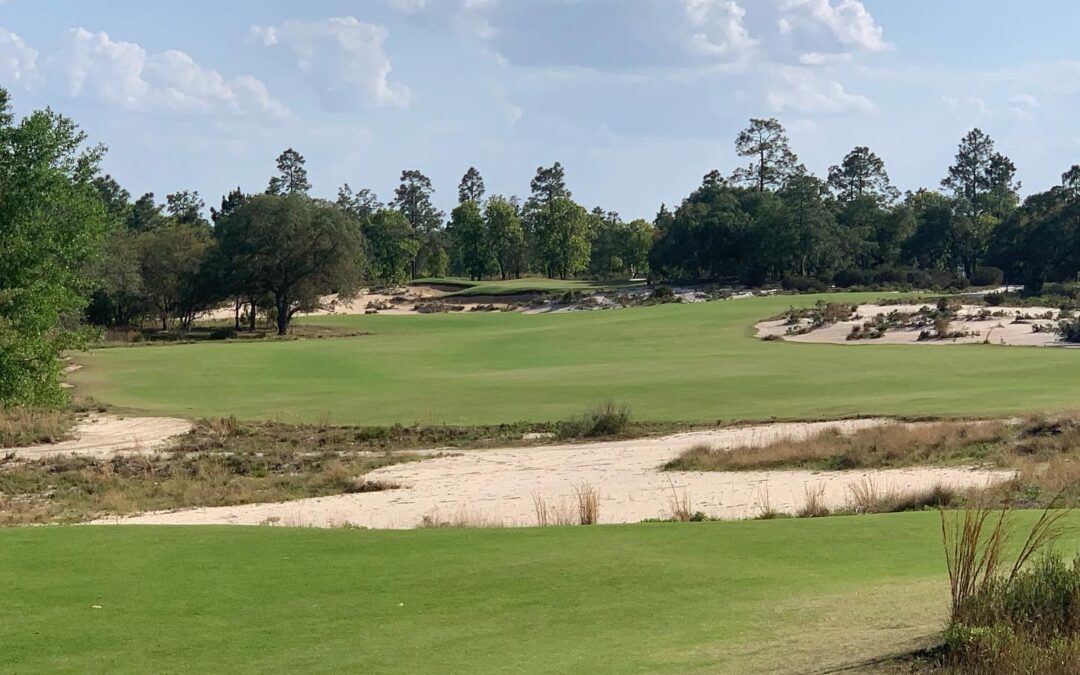
by Gary Williams | Feb 1, 2024 | Great Golf Holes
Par 4 – 350 yards
Gil Hanse and Jim Wagner do many things exceptionally well as designers of golf holes and the 17th hole at Ohoopee Match Club showcases several of their design principles. First, the hole sits into the land so naturally it appears that the sandy areas that bracket the fairway on the right-hand side look as if they simply peeled the feature back from its original presentation. From the tee driver is not necessary for medium to long hitters and the fairway is broad and you’re enticed to possibly challenge the waste area on the right as the fairway extends higher on that side. The tilt from right to left is subtle but significant and while the ideal angle to play into the green is from the low and left side, the fairway runs out quickly with the contour running to the left.
The green is beautifully positioned on a ridge that is roughly 20 feet above the fairway and the green side bunkering is so eerily similar to that of several holes at Pine Valley you might believe you’re in the sand barrens of New Jersey. The green is pitched from right to left which makes playing from the left and low side of the fairway even more desirable. It’s almost the end of your walk and this hole is so aesthetically pleasing you could look at it from all angles. The tender care given to its fairway contouring and the movement of the green complex makes this one of finest holes built in recent memory.
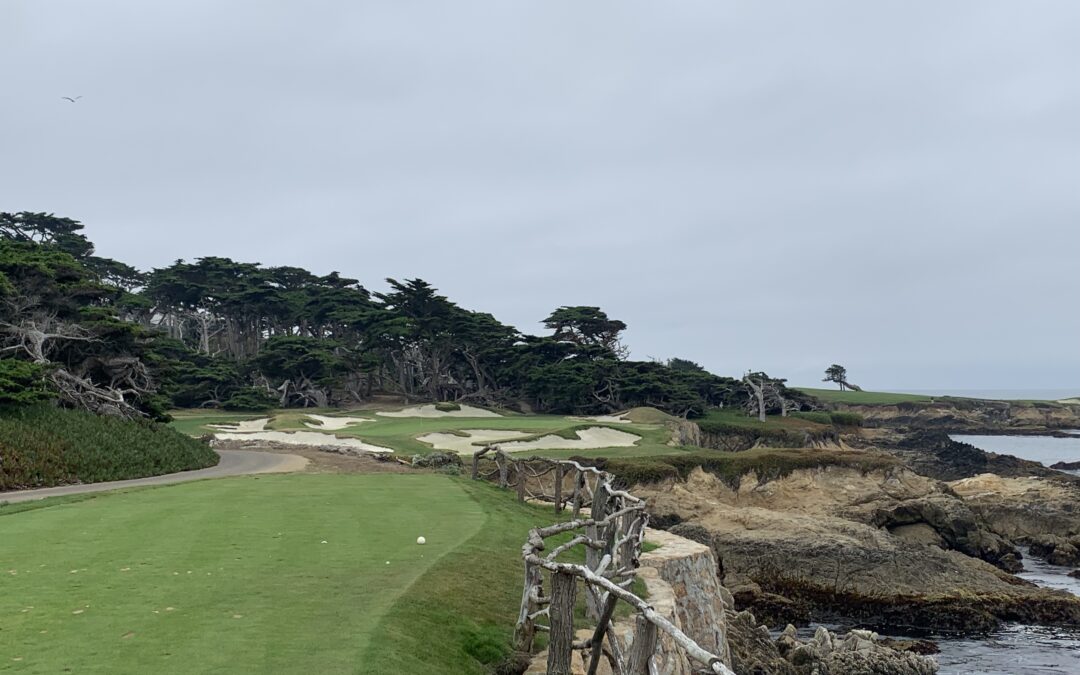
by Gary Williams | Jan 26, 2024 | Great Golf Holes
15th hole – 135 yards
Historically, the big brother 16th at Cypress Point, has garnered more photographic attention and greater overall lauding for the grandiosity of the hole and it’s all earned. However, the 15th at Cypress Point is a truly sublime and genius
golf hole. When you spend almost four hours in anticipation of crossing 17-mile drive to experience the ocean holes you may first see the 16th in the distance before gazing to your left and focusing on what’s next. The tee is the most remarkable blending of the natural surrounds to the contrived exercise of building a teeing ground. The use of the barrier fencing to guard the perimeter of the tee box is a masterful blending of native materials. I believe the 12th at Augusta National and the 15th at Cypress Point are the two best shortest par 3’s Alistair Mackenzie ever designed and they are both followed by arguably his two most famous holes.
Measuring 135 yards from the back tee the 15th is not intended to overwhelm you. It gives everyone a reasonable chance despite the sensory overload. The bunkering is masterclass, and the green is the appropriate size for the length of the shot. It provides choices with reasonable width for pin positions and is pitched toward you, especially center left, to play toward the rear of the green and have the ball retreat towards the center. This is as practical a hole as Mackenzie could have conceived as the “first” on the ocean. It is also serene tucked in the cove before truly turning out to sea and the violence and length of what follows on the 16th. This is truly one of the greatest golf holes in the world.











